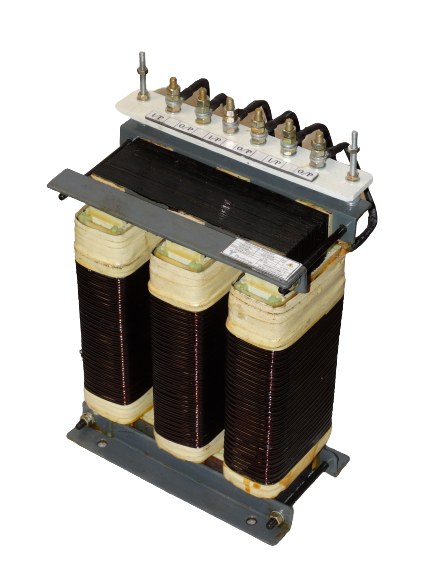

Detuning Reactors
Detuned Reactors prevent harmonic amplification caused due to RESONANCE and avoid the risk of overloading capacitors, thereby significantly reducing voltage and current harmonic distortion in the network. All connected equipment, and even remote substations are subject to voltage fluctuations which may result in equipment malfunction or failure. To avoid this problem, it is common to insert reactors in series with capacitor banks.
The reactor also by its nature will safeguard capacitor and associated switch gears against switching inrush, which other may damage capacitors, circuit breakers and contactors.
Why use Detuned reactor?
Presence of Harmonic distortion due to the non-linear loads within the network or due to import of harmonic from grid or power source will increases the current flowing through capacitors as the capacitive reactance is inversely proportional to the frequency, consequently capacitors will be subjected to overload. The overload on capacitors can cause premature failure in capacitor due to increased voltage and thermal stress on dielectric.
On the other hand, the inductive reactance XL of a Reactor is directly proportional to frequency: The magnitude of inductive reactance will increase with high frequency harmonics thus blocking the harmonic current. Hence, use of detuned reactor in series with capacitor will offer higher impedance for harmonics, thus eliminating risk of overload in capacitors.
The inductance value of detuned reactor is selected such that the resonance frequency is less than 90% of dominant harmonic in the spectrum. For example: if 5th harmonic is dominant in the spectrum, any series LC circuit having resonance frequency 90% of 250Hz (for 50Hz system), i.e. if the natural resonance frequency of LC is less than 225Hz, it is categorized as detuned filters or detuned capacitors.
In a detuned filter application, the voltage across the capacitors will be higher than the nominal system voltage due to Vector sum of voltage drop, hence the capacitors must be designed to withstand higher voltages. Typical capacitor voltages for 400/415V network are 480V, 525V etc.
What are the benefits of using a Detuned Reactor?
The typical benefits of a detuned reactor are as follows:
- It eliminates harmonic amplification
- It enhances the life of capacitors by reducing voltage and thermal stress due to harmonics.
- Prevents the constant nuisance of input fuse blowing or circuit breaker tripping
- Reduces over heating of the transformer, busbars, cables, switchgear etc caused due to harmonic amplification.
- Reduces the harmonic current in the electrical supply system
- Addresses the harmonic problems created by non-linear loads.
- Improves Power Factor in harmonic rich environment.
Product Features
- Enclosed coils completely enclose the Load Reactor coils against moisture, dirt, dust and industrial contaminants for maximum protection in industrial environments.
- Mounting Clamps are made of heavy steel to add strength to core construction and provide stability. Slotted mounting feet permit easy and flexible installation.
- Attractive epoxy coated black matte finish, easy-to-read label with complete technical details.
- Constructed with high quality silicon steel laminations to minimize core losses and increase performance and efficiency. The core is constructed using the “Hole-Less” method thus minimising the magnetic reluctance and decreasing the No-Load Current (NLC) and No-load Watt Losses. This will help give a performance with minimum vibration and humming Sound.
- Super Enamelled Copper or Aluminium wire of the highest quality assures efficient operation.
- Every Line Reactor is tested at full rated current. This enables us to determine the exact Airgap required and indicate the functioning of Inductor at rated current.
Product Classifications
- Current Capacity: From 1 Amps to 1000 Amps
- Inductance: As per requirement
- Linearity: As per requirement. At least 190% for Detuning Reactors.
- Conductor Type:
- Copper
- Aluminium
- Conductor Covering Type:
- Enamelled ‘F’ Class
- Enamelled ‘H’ Class
- Paper Covered
- Fiber Glass Covered
- Enamelled Conductor Covered in Fiber Glass
- Core Type: Cold Rolled Grain Oriented (CRGO) Laminated Silicon Steel
- Rectangular Strips
- E-I Type for Small reactors
- Varnishing Type: Vacuum Pressure Impregnated and Epoxy Coated
- Terminal Type: Wago, Phoenix, Brass Bolts, Copper Busbars
- Clamping: Solid Angles and ‘C’ Channel
- Clamping Bolts: High Tensile Bolts
